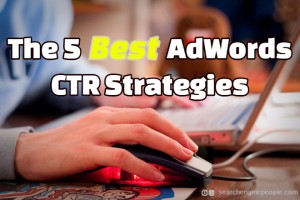Each year, eCommerce sales in the US steadily tick up by 10%.
But even with the increased sales, there are still a lot of businesses out there who aren’t selling online. 79% of Americans shop online.
So, why aren’t you selling?
Right off the bat, you’re adding a sales channel to your revenue stream, you’re widening your customer base, and you’ve increased your store “hours.”
Starting an online store is now easier than ever. You don’t need the high-tech background, or to even hire a team of developers. You don’t need to spend countless hours and thousands of dollars. In fact, a good site could be ready to go in under $ 100.
The commitment and time it takes to create the site itself is then shifted to making the site something consumers want to use, come back to, and tell their friends about.
Here are some tips on how to get that done.
How to Start Your Store
So you have a product, and you want to sell it online. Or you want to sell online, and you are looking for the perfect product to hawk.
If you’re in the first bucket, you’re trying to identify your prime audience, and how you can reach them online. The latter requires a little more research to find out what products are selling within your niche, and going from there.
Luckily, it’s easier than ever to setup an online store. It doesn’t take tons of capital and a tech wiz to set it up. Follow a few initial steps to get the ball rolling:
1. Research Market Demand and Product Fit
You want to start a store, but is it the right time?
Luckily, you can test the waters before you invest in selling an unsellable product. Put some money out in ads to see if there are buyers out there. Hit up Google Trends and do product searches to see what’s already available and who else has been searching for it. Google Trends will also tell you where products are experiencing regional growth (aka where you might be shipping your product).

You can also use SEMRush to analyze search data for the product, too. Check out how many people are searching, if there is bidding out there for its keywords, and if those keywords are trending up or down.

Can’t land of a product? Research affiliate networks, like ClickBank or CJ, that already sell them.

(Image Source)
Join up with the network to become an affiliate and you’re in line to sell their already credible goods. Then, all the guesswork of your site is gone– all you have to worry about is selling the product.
You can also sell via Amazon Fulfillment— which takes care of storing the products, shipping, and customer support. Just send your stuff to a distribution center and wait for buyers to buy.
2. Set Up Your First Online Store Right
When it comes to setting up an online store, you have three main options.
Option 1: Magento
Sometimes when things get bigger, they get more complicated. Magento is pretty much the go-to for big eCommerce, and has a ton of customization options.
But it also comes with the label of being the least user-friendly. Magento is good for big-business, but comes with a price tag: it, and it’s similar counterpart DemandWare, can set you back at least $ 10,000+ to launch.

Option 2: WordPress (WooCommerce)
WordPress is a decent option for those in between big and small. You’ll just need to add the WooCommerce plugin to your already compatible theme and you should be good to go.

(Image Source: woocommerce.com)
One caveat, though, that commonly plagues WordPress websites: Always watch out for site performance.
For instance, make sure it stays lightening fast. Here’s why.
Jamming a semi-compatible theme with a ton of plugins is fairly common. But all of that added ‘stuff’ tends to weight down site performance. Which hits you where it matters most: speed.
Google recently announced new mobile page speed benchmarks. One of their key findings sums up the risk here: “The probability of someone bouncing from your site increases by 113 percent if it takes seven seconds to load.”

So… seven seconds is the cutoff. What’s the average? Try 22 seconds!
Look: It all starts with good hosting. The industry average page loading time is 700ms, so you want something at-or-near that mark to make sure you’re not making your life more difficult than it needs to be.
But then you really, really need to be careful about how your WordPress site is setup in under to come in well below that seven second mark.
Option 3: BigCommerce
Finally, a ‘done-for-you’ website platform like BigCommerce can help simplify life.
These pull together many of the problematic issues we just discussed, like your website, themes or design, hosting, and more, in order to package everything under one easy-to-use roof.

Best of all?
They take care of issues connecting product sales to payment processing, shipping, sales, and taxes. Coordinating all of this stuff can be a major headache. (Not to mention, time suck as well.)
But many of these ecommerce platforms help you connect it all with just a single click, often partnering with payment processors so there’s literally no set-up required of you. (And don’t worry, you don’t get charged extra for this convenience. Typically the pricing is kept at industry standard of around 2.9% + $ 0.30 per transaction.)
3. Plan Your Marketing and Sales Strategy
Your site looks great. People will just find you now, right?
Wrong. Now it’s time to utilize some marketing techniques to bring the customers in door. You don’t have a door, but you know what I mean.
Step 1: Get influencers to review and recommend your products to their own audiences. Bloggers, larger companies that carry your product, or other people you know that have a good online reach.
You can use Google operators to find bloggers in your product niche, and reach out to them for reviews. Or, partner with sites looking for good content. Feed them information on your product that they can use for their page.
You can also sign up for FollowerWonk, which is like Google Analytics for Twitter. There you can search for industry-related bloggers to connect with.
Step 2. Fire up the ad campaigns. Remarketing doesn’t cost a lot, and those ads that follow people around after they have left your site can really increase ROI. Set them up through Google AdWords or Facebook (in Dynamic Product Ads).
When The Honest Company started using these, they saw a “34% increase in click through rates AND a 38% reduction in cost per purchase,” according to Facebook.

Now that you’ve got your store setup, make sure it’s a place your customers want to spend time in (and hopefully buy from!).
Four Design Trends to Follow
Sometimes “trend” can be a dirty word. Think trucker hats and MC Hammer pants.
But sometimes trend simply means this is what the consumer likes and wants. These are the kinds that you want to look out for, because if the consumer is happy, your bank account is happy.
And if you’re setting up your online store, you want to pay close attention to what visitors (who will hopefully become buyers) prefer.
Here are some helpful design trends to keep your visitors engaged and primed to purchase.
1. Multi-Device Shopping
85% of the time, users will start a purchase on one device, and then switch to another before making the buy. And these are the buyers you’re after: multi-channel shoppers will spend more than three times more than single-channel shoppers, and they’ll shop more often, too.
What does this mean for your shop? Don’t place all your eggs in the desktop basket. People are buying on their phones and tablets, too, and you need to have a site that’s optimized for different devices.
Marucci Sports recently redesigned their website with a strict attention on mobile, which upped their mobile conversions by 50%, and their tablet conversions by 24%.

Smartphones and other mobile devices up your store’s reach. Shoppers don’t have to be sitting on a laptop at home to make a purchase. Make sure each page’s user experience allows the potential buyer to jump to another device whenever they want.
2. Personalization and Contextual Shopping
Shoppers want to feel like they’re the only girl in the room. That you only have eyes for them, and that you made the product just for their benefit.
Website personalization helps you make them feel this way, and adjusts what the user sees on the homepage based on what they looked at the last time they were on the site.
Amazon is king of this. Every time a user returns to the page, they are met with buying options that mimic what they’ve already purchased and what they have searched.

Amazon knows this works. 86% of buyers stated that quality personalization makes them more interested in the company’s products or services.
3. Location Targeting
It should come as no surprise that mobile internet usage is on the rise. In fact, it topped desktop numbers last year (51.2% to 48.7%).
People are browsing on vacation. On planes, trains, and automobiles. While waiting on their kids to finish soccer practice.
What does this mean for websites and marketers? Mobile users come with a ready-made location tracker. It’s big business for location-based mobile advertising, going from $ 4.3 billion in 2014 to an expected $ 18.2 billion in 2019.
Check out how Hertz targeted its site for different locations, using slightly different copy and photos.
For Singapore:

For Chile:

Why else is this important for you? You can use location targeting to create mobile ads that link up your site to your brick-and-mortar store. That way, you can target those users on the beach, and get them to come into the physical store, too.
4. Product Videos
Are you a numbers person? Here are some staggering stats: 90% of site viewers say that watching a product video will help them with their buying choices. 64% say that the videos make them more likely to buy.
Not only do videos prompt buying decisions, they promote brand identification. Hubspot found that 80% of buyers can recall a video they have watched in the last month. That’s your brand they are remembering!
Now here’s the quick and dirty analysis of those numbers: create product videos for your site.
Hi Gear Tents uses videos to give customers a first-hand experience of their product. 48% of online shoppers polled cited not being able to get up close and personal with a product is a negative for buying online. A good video of someone using the product in a real-life setting can alleviate some of these hesitations.

If you’re worried about the cost, don’t. These don’t have to be summer blockbuster budget videos. There are ways to make quality videos that your customers will want to watch, without overspending.
Check out some other good video examples here. Then start filming.
Three Pro Conversion Tips to Seal the Deal
Now you’ve built that beautiful site. You followed the rules and are open for business.
People are stopping by, but online window shopping is not going to keep your proverbial lights on.
Of all the people that visit your site, only 1-2% will end up making a purchase.
That’s a whole lotta people in play, and you should pay them some attention. Want to increase your revenue? Up your conversions.
And not just the fill up the shopping cart and buy conversions. You also want to focus on the earlier steps in the buyer journey– signing up for the newsletter, contacting customer service, etc.
One by one, these new potential customers who are requesting more information or becoming more engaged can lead to much more than simple web traffic numbers.
Here’s how to get those people through the process.
1. Find (and Fix) Underperforming Pages
Remember that blog on your website that used to be a priority, but then you ran out of time in your week to keep it up? It’s still bringing in visitors through organic search because it takes time to your SEO-snowball rolling.
But it’s likely that those old posts have high bounce rates. Web visitors are not going to stay on your site that way.

Find those pages, and fix them. Give them fresh content, repurpose old stuff, add good images, include a video.
Or, get an even better idea of what they are seeing (and what’s making them leave) when they visit the site with services like CrazyEgg.
2. ‘Funnel’ More Traffic to Your Best Performing Pages
Where are your goal conversions happening? Find them using the Reverse Goal Path report in Google Analytics.

What pages are people on, right before there is a conversion? It’s likely that some of your pages are high-performers in this area.
These are your heavy-hitters. They are working in your favor to keep visitors engaged and converting those on the edge.
Now go back to all those neglected, need-to-be-fixed pages from before, and update them with internal links back to the high-converting pages.
Presto. Chango.
3. A/B Test These Page Elements
Remember that measly 1-2% of people that turn into conversions when visiting your site?
You can’t accept 2%. Start testing what works and what doesn’t on your site. Those 98% are waiting on it.
Focus on a few simple fundamentals to see what drives results:
- If you include an offer, do your conversion rates go up?
- Have you tried about both positive and negative (pain of loss) messaging? Which works better for your biz: what consumers get or what they lose out on if they don’t buy?
- Is your page layout logical? Can a user easily find out the most important information and navigate quickly?
- Are the visuals on the page enhancing the experience or too distracting?
- Are you using headlines that motivate? Do they elicit the need to engage with the product?
- Are your CTAs full of lively action words and verbs and void of boring, general phrases?
Conclusion
If you’ve got a good product to sell, or want to sell someone else’s good product, you need an online store.
They can give customers a personalized buying-experience that engages them to purchase, and breaks the constraints of only brick-and-mortar locations. Your shoppers can search and find your products from whatever your location.
51% of those in the US prefer to shop online, with 30% of Americans shopping at least once a week. That’s A LOT of people who are primed and ready to buy your product.
Put together a user-optimized site that will entice visitors to buy, and start selling.
Digital & Social Articles on Business 2 Community(81)
Report Post







